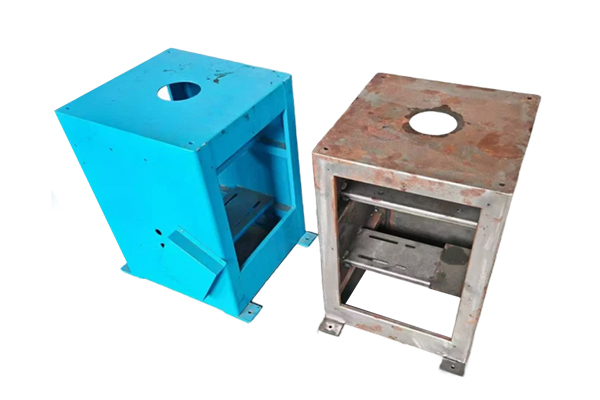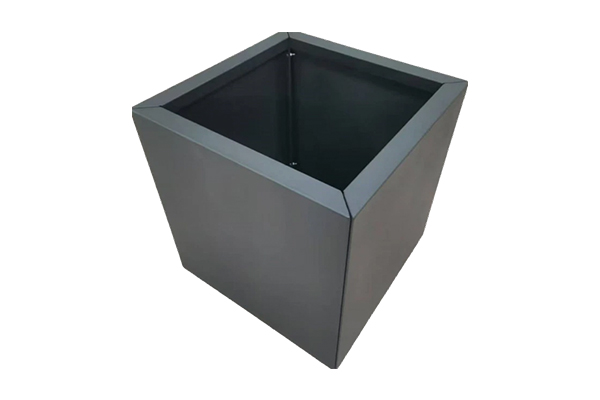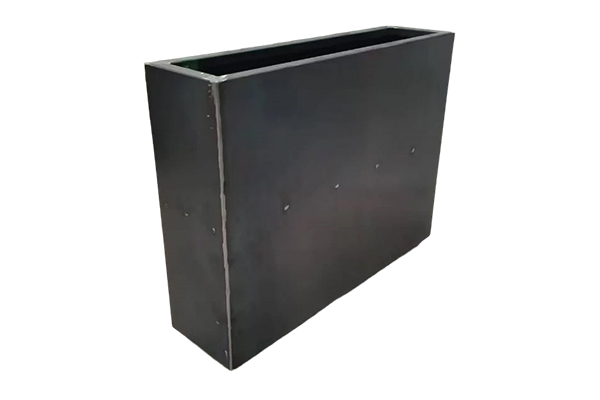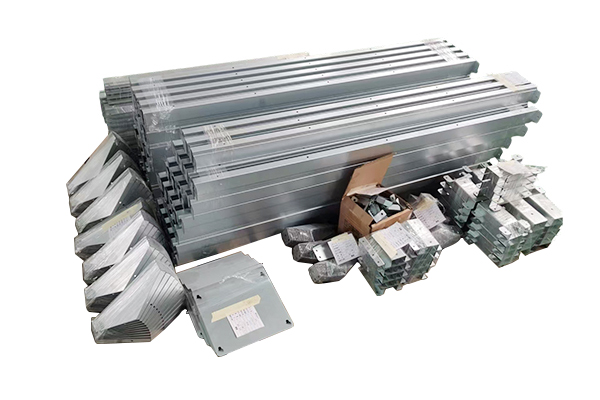What is the waterproofing process of integral welded flower pot?
Release Time : 2025-03-06
Integral welded flower pot is widely used in modern gardening and landscape design because of its durability and diverse shapes. However, the tiny gaps that may be generated during the welding process and the water absorption of the flower pot material make waterproofing a key link to ensure the long-term use of the flower pot. This article will introduce the waterproofing process of integral welded flower pot in detail to help readers better understand and apply this technology.
The key to the waterproofing process of integral welded flower pot is to form a waterproof layer that can effectively prevent water penetration. This waterproof layer not only needs to have good waterproof performance, but also needs to maintain the air permeability of the flower pot to ensure the healthy growth of plant roots. Common waterproofing methods include the use of waterproof coatings, waterproofing agents, or special welding techniques.
Among them, silicon waterproofing agent is a widely used waterproofing agent. The main component of silicon waterproofing agent is siloxane. When it comes into contact with water, it will form a nano-scale hydrophobic film on the surface of the flower pot and the surface of the capillary pores. This film can effectively prevent the intrusion of water without blocking the capillary pores of the flower pot and maintaining the air permeability of the flower pot. When using silicone waterproofing agent for waterproofing, you need to clean the surface of the flower pot first, remove oil and impurities, then evenly apply the waterproofing agent and wait for it to dry and solidify.
In addition to silicone waterproofing agent, waterproof coating is also a commonly used waterproofing method. Waterproof coating usually has excellent water resistance and adhesion, and can form a solid waterproof layer. Before applying waterproof coating, the surface of the flower pot also needs to be cleaned to ensure that the coating can adhere firmly. When applying, pay attention to the uniformity and thickness of the coating to avoid missing or uneven coating.
In addition, some special welding techniques can also improve the waterproof performance of flower pots to a certain extent. For example, ultrasonic plastic welding technology can form a tight weld at the welding point of plastic flower pots through high-frequency vibration and heat, thereby effectively preventing water penetration. This technology is suitable for plastic flower pots and has high requirements for welding equipment and operating techniques.
During the waterproofing process, the following points should be noted: First, the waterproofing should be carried out after the flower pot is welded to avoid damage to the waterproof layer caused by the heat generated during the welding process; second, the waterproof layer should evenly cover the surface and interior of the flower pot, especially the bottom and sides in contact with the soil; finally, after the waterproofing is completed, it needs to be fully dried and cured to ensure the stability and durability of the waterproof layer.
In summary, the waterproofing process of integral welded flower pot is a complex and meticulous process, which requires comprehensive consideration of the material, shape, use environment and performance requirements of the flower pot. By reasonably selecting the waterproofing method and strictly controlling the process parameters, it can be ensured that the flower pot has good waterproof performance and air permeability, providing a good environment for plant growth.
The key to the waterproofing process of integral welded flower pot is to form a waterproof layer that can effectively prevent water penetration. This waterproof layer not only needs to have good waterproof performance, but also needs to maintain the air permeability of the flower pot to ensure the healthy growth of plant roots. Common waterproofing methods include the use of waterproof coatings, waterproofing agents, or special welding techniques.
Among them, silicon waterproofing agent is a widely used waterproofing agent. The main component of silicon waterproofing agent is siloxane. When it comes into contact with water, it will form a nano-scale hydrophobic film on the surface of the flower pot and the surface of the capillary pores. This film can effectively prevent the intrusion of water without blocking the capillary pores of the flower pot and maintaining the air permeability of the flower pot. When using silicone waterproofing agent for waterproofing, you need to clean the surface of the flower pot first, remove oil and impurities, then evenly apply the waterproofing agent and wait for it to dry and solidify.
In addition to silicone waterproofing agent, waterproof coating is also a commonly used waterproofing method. Waterproof coating usually has excellent water resistance and adhesion, and can form a solid waterproof layer. Before applying waterproof coating, the surface of the flower pot also needs to be cleaned to ensure that the coating can adhere firmly. When applying, pay attention to the uniformity and thickness of the coating to avoid missing or uneven coating.
In addition, some special welding techniques can also improve the waterproof performance of flower pots to a certain extent. For example, ultrasonic plastic welding technology can form a tight weld at the welding point of plastic flower pots through high-frequency vibration and heat, thereby effectively preventing water penetration. This technology is suitable for plastic flower pots and has high requirements for welding equipment and operating techniques.
During the waterproofing process, the following points should be noted: First, the waterproofing should be carried out after the flower pot is welded to avoid damage to the waterproof layer caused by the heat generated during the welding process; second, the waterproof layer should evenly cover the surface and interior of the flower pot, especially the bottom and sides in contact with the soil; finally, after the waterproofing is completed, it needs to be fully dried and cured to ensure the stability and durability of the waterproof layer.
In summary, the waterproofing process of integral welded flower pot is a complex and meticulous process, which requires comprehensive consideration of the material, shape, use environment and performance requirements of the flower pot. By reasonably selecting the waterproofing method and strictly controlling the process parameters, it can be ensured that the flower pot has good waterproof performance and air permeability, providing a good environment for plant growth.







